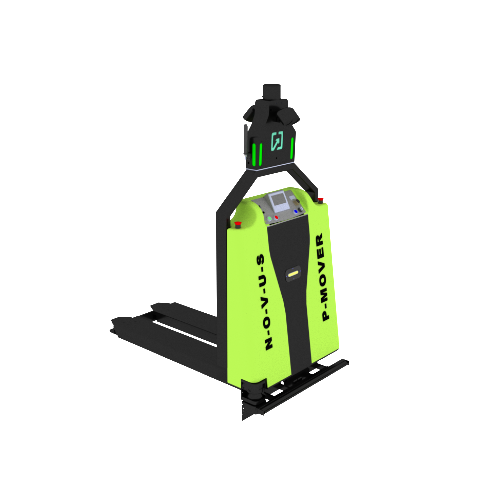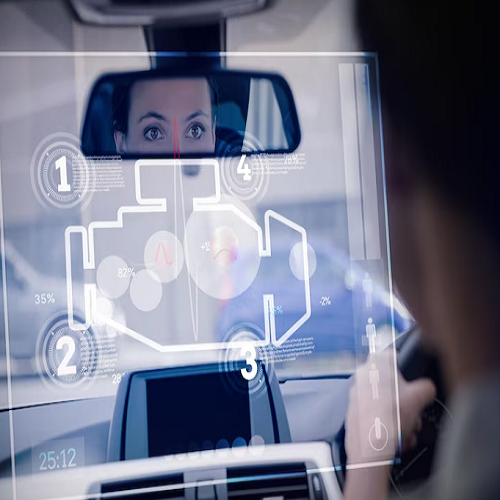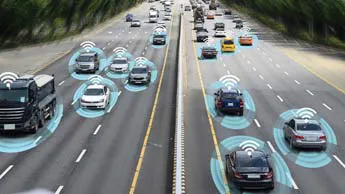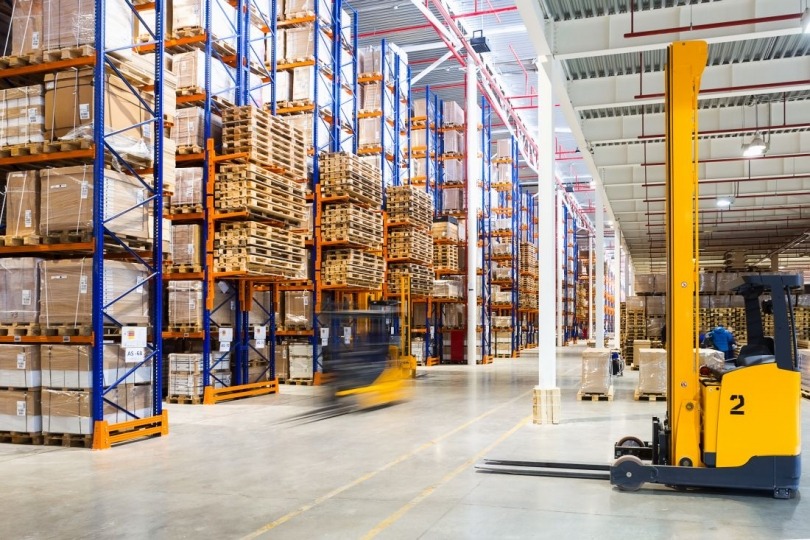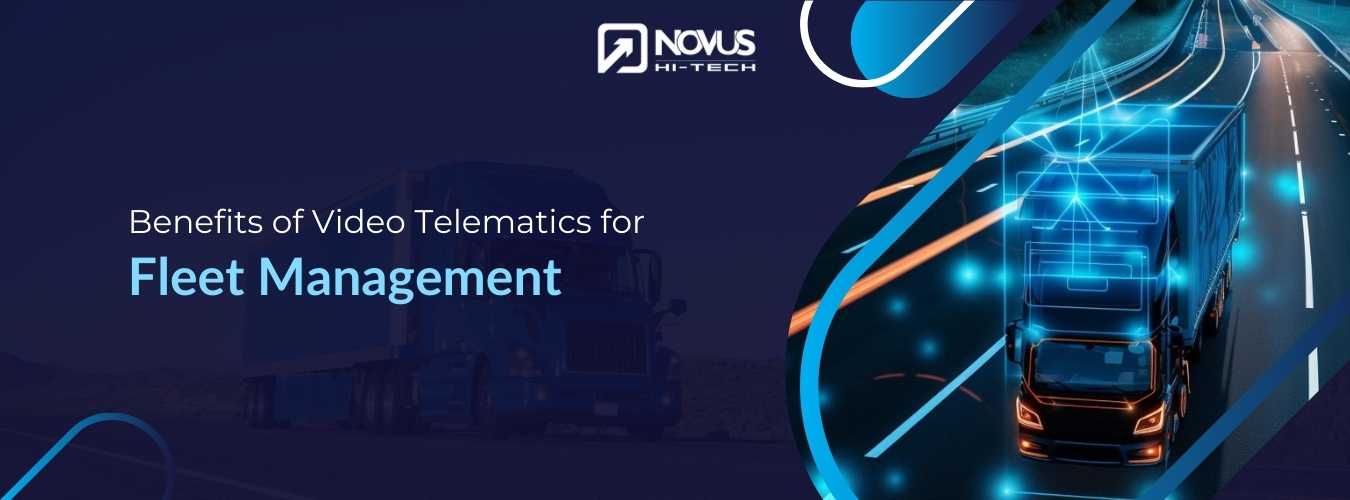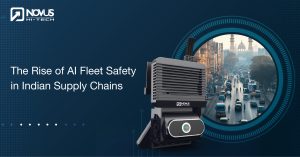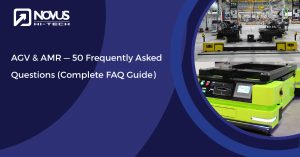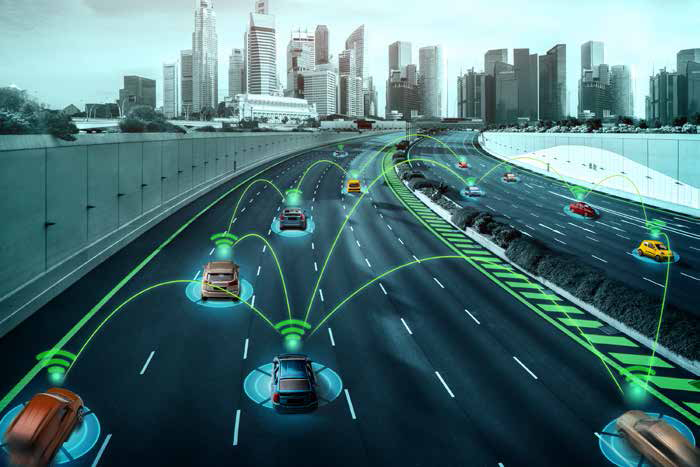What is Video Telematics?
Video telematics is an advanced fleet management solution that combines video footage with traditional telematics data to provide a comprehensive view of vehicle operations and driver behavior. Through the integration of in-cabin and exterior cameras, video telematics captures real-time footage of both the driver and surrounding traffic, offering insights beyond standard telematics data like location, speed, and route. By integrating this video data with traditional telematics systems, fleet managers gain a holistic view of incidents, enabling more informed decision-making and a higher level of fleet safety and accountability.
This solution works by capturing video from strategically placed cameras within and outside the vehicle. In-cabin cameras monitor the driver’s actions, detecting behaviors like distraction, fatigue, and compliance with safety regulations. Exterior cameras, on the other hand, record the vehicle’s surroundings, which can help in accident reconstruction and liability claims. This video data is transmitted to a central telematics platform where it’s analyzed alongside conventional telematics data, generating actionable reports and insights. The video is stored in a cloud-based platform and can be accessed by fleet managers for analysis and reporting, which helps in identifying risky driving patterns and implementing targeted safety interventions.
Learn how Video Telematics enhances fleet management efficiency.
Download our free brochure/e-book for expert insights and trends!
The Rise of Video Telematics
In recent years, video telematics has gained significant traction within the fleet management industry. The demand for enhanced fleet safety and better driver behavior monitoring is a primary driver behind this growth. Traditional telematics, while effective in tracking location and performance data, lacks the real-time visual insights that video telematics provides. This gap is filled by video telematics, which allows fleet managers to understand not only where their vehicles are but also how their drivers are performing behind the wheel.
Technological advancements in camera systems and data analytics have further propelled the rise of video telematics. Modern camera systems are equipped with AI-driven features that automatically detect risky behaviors, such as hard braking or swerving, alerting drivers and managers in real time. The growing sophistication of data analytics also enables fleet managers to generate customized reports that assess driver performance, safety compliance, and vehicle condition. Compared to traditional telematics, video telematics offers the distinct advantage of combining visual evidence with location and performance data, creating a powerful tool for improving fleet safety and operational efficiency.
Benefits of Video Telematics for Fleet Management
Enhanced Driver Safety
Video telematics improves driver safety by providing real-time coaching for risky behaviors such as distracted driving, speeding, or aggressive maneuvers. The system alerts both drivers and fleet managers when these behaviors occur, enabling immediate corrective action. Additionally, the visual evidence captured can be used for accident reconstruction, helping to clarify incidents and, in many cases, exonerate innocent drivers. This feedback loop not only protects drivers but also serves as a valuable training tool, using real-world footage to reinforce safe driving practices.
Reduced Liability and Insurance Costs
Video telematics is an invaluable tool for reducing liability and insurance costs. In the event of an accident, video footage can serve as objective evidence to defend against claims and identify the actual cause of the incident. This helps in mitigating fraudulent claims and can potentially lead to reduced insurance premiums. Insurance companies often favor fleets that employ video telematics as it demonstrates a commitment to safe driving practices and offers clear evidence in the event of disputes.
Increased Operational Efficiency
By integrating video with telematics data, fleet managers can optimize routes and reduce delays. For example, real-time footage provides visual confirmation of traffic conditions, allowing drivers to make on-the-spot decisions to avoid congested areas. Additionally, video telematics systems offer insights into driver performance, contributing to improved fuel efficiency and productivity. Visual inspection footage can also aid in scheduling preventive vehicle maintenance, reducing downtime and ensuring vehicles are in optimal condition.
Improved Customer Service
Video telematics can enhance customer service by providing video proof of delivery, which builds trust and allows for dispute resolution if delivery issues arise. Increased driver accountability, encouraged by video monitoring, also contributes to improved customer interactions, as drivers are aware of the company’s commitment to professionalism and customer service standards.
Employee Engagement and Retention
Video telematics supports driver engagement and retention by reinforcing positive driving habits through video feedback. Drivers receive immediate recognition for safe driving practices, promoting a positive feedback loop that improves morale. Moreover, the transparency offered by video telematics fosters better communication between drivers and fleet managers, building a culture of trust and accountability.
How Video Telematics Works
Video telematics combines video footage with traditional telematics data to offer a full-spectrum view of driver behavior and vehicle performance. Unlike standard telematics, which tracks data like speed, location, and route, video telematics includes visual insights that capture both the driver’s actions and the external environment, providing context to telematics data points. This system typically involves several key components and processes, each playing a crucial role in improving fleet safety and operational efficiency.
1. Video Capture and Camera Placement
The foundation of any video telematics system is its camera setup. Fleet managers can choose from a variety of camera configurations depending on their specific requirements:
- In-Cabin Cameras: These cameras face the driver and monitor behavior inside the cab. They detect potentially dangerous actions like phone use, drowsiness, or not wearing a seatbelt. In-cabin cameras serve as a valuable tool for encouraging attentive driving and capturing evidence in case of accidents.
- Forward-Facing Cameras: Positioned on the windshield, these cameras capture the vehicle’s front view, recording events on the road. This footage provides vital information for reconstructing accidents, identifying road conditions, and analyzing external factors impacting driver behavior.
- Side and Rear Cameras: In certain setups, cameras may also be placed on the sides or rear of the vehicle to capture surrounding traffic and assist with blind spots. These views are especially useful for larger vehicles that face challenges with visibility.
This multi-angle approach ensures comprehensive coverage, allowing fleet managers to observe driver behavior, track driving patterns, and record any incidents with valuable context.
2. Data Transmission and Connectivity
Once the cameras capture footage, the video data must be transmitted in real-time or near-real-time to a centralized platform. This is where connectivity solutions come into play. Video telematics systems use cellular networks (3G, 4G, or 5G) or Wi-Fi to transmit video data along with traditional telematics information such as speed, location, and engine diagnostics. The video is either streamed continuously or uploaded in short clips triggered by specific events, such as harsh braking, speeding, or collisions.
Some systems use edge computing, where initial data processing happens within the device itself before transmitting selective data to the cloud. This minimizes data usage and ensures only essential footage, like a collision or near-miss, is sent to the fleet management system, reducing transmission costs and increasing data efficiency.
3. Integration with Telematics Platforms
The video and telematics data are sent to a cloud-based telematics platform, where it is integrated and analyzed. Fleet managers can access this platform to view live or recorded video footage, track vehicles in real-time, and receive alerts on specific events. The integration of video with telematics data offers a more comprehensive view of fleet operations, as it connects visual evidence with data points like location, speed, and time.
This integration also enables custom configuration of alerts and reporting features. For instance, managers can set up alerts for specific behaviors (like distracted driving or harsh acceleration) and receive instant notifications. Reports can be generated based on metrics like frequency of incidents, driving hours, or safety scores, providing a detailed overview of driver performance over time.
4. Artificial Intelligence and Real-Time Analysis
One of the key components of modern video telematics systems is the use of artificial intelligence (AI) and machine learning (ML) for real-time video analysis. AI algorithms analyze live footage from in-cabin cameras to detect risky behaviors, such as drowsiness, distraction, or aggressive driving. These AI-powered systems are capable of recognizing patterns in behavior, enabling fleet managers to identify trends and provide targeted coaching.
For example, if the system detects a driver is not paying attention to the road, it may trigger an immediate alert or play an audio prompt to alert the driver. AI-driven analysis also reduces false alerts, as the system is trained to recognize specific risky behaviors rather than relying on generic triggers like sudden speed changes. The continuous improvement of these algorithms allows video telematics systems to deliver increasingly accurate insights.
5. Storage and Accessibility of Video Data
Video telematics systems store footage in the cloud, allowing fleet managers to access video data remotely and review it as needed. Depending on company policies and regulatory requirements, the storage duration of video data can vary. Many systems offer customizable retention periods and secure data storage options, which ensure compliance with data privacy regulations.
With cloud-based access, managers can view real-time footage or historical video recordings from any location. This remote access is particularly valuable in accident investigations, where reviewing video evidence promptly can help in claims processing, defending against false claims, and identifying fault accurately.
6. Reporting and Data Visualization
In addition to video footage, telematics platforms provide comprehensive reporting and data visualization tools. These tools transform raw data into easily understandable insights. For instance, a fleet manager can access dashboards that display metrics such as the number of safety incidents, individual driver scores, fuel consumption, and overall fleet performance. Data visualization tools help fleet managers to quickly spot patterns or outliers, enabling them to make data-driven decisions that improve fleet safety and efficiency.
Reports generated by video telematics systems can be customized to focus on specific aspects of fleet safety or operational performance, allowing managers to evaluate the effectiveness of safety initiatives and track progress over time.
In summary, video telematics works by capturing multi-angle footage, transmitting data through cellular or Wi-Fi networks, and integrating it with telematics platforms where AI and data visualization provide actionable insights. Through this combination of real-time monitoring, video recording, and data analysis, fleet managers gain a powerful tool to enhance fleet safety, improve driver performance, and boost overall operational efficiency. This comprehensive approach to fleet monitoring is rapidly becoming the standard, as more fleets recognize the value of combining visual evidence with traditional telematics data.
Implementing Video Telematics for Your Fleet
Implementing a video telematics system in your fleet can provide powerful insights, enhance driver safety, and optimize operational efficiency. However, the effectiveness of this technology depends heavily on careful planning, selection, installation, integration, and training. Here’s a detailed guide to ensuring a successful rollout of video telematics in your fleet.
1. Planning and Selection
Before implementing video telematics, it’s essential to assess your fleet’s specific needs and objectives. A well-defined plan can help ensure that the system aligns with your goals and maximizes the benefits of the technology.
- Assess Fleet Needs and Identify Goals: Determine what you want to achieve with video telematics. Common goals include reducing accidents, improving driver performance, lowering insurance costs, and enhancing overall fleet efficiency. Conduct an initial assessment of the challenges your fleet faces, such as high accident rates, frequent insurance claims, or issues with driver behavior. Identifying these needs will guide you in selecting the most suitable system.
- Select the Right System: The choice of a video telematics system should be based on factors like feature requirements, budget constraints, and compatibility with existing software. For example, some systems offer advanced features like AI-powered driver monitoring or lane departure warnings, while others focus on basic video recording and data collection. Consider the technology’s scalability, ease of use, and reporting capabilities.
- Data Security and Privacy Compliance: Privacy and data security are essential, as video telematics involves recording driver behavior and capturing video footage. Select a system that complies with data privacy laws (such as GDPR if operating in Europe) and has robust security features, such as data encryption. Implement policies that balance safety and privacy, providing clear communication to drivers about what data is collected and how it will be used.
- Driver Acceptance and Buy-In: Ensuring drivers understand the benefits of video telematics is critical for successful adoption. Address potential concerns about privacy and explain how the system promotes safety and accountability. Gaining driver buy-in from the start can make a significant difference in the effectiveness of the system.
2. Installation and Integration
Once the planning and selection phase is complete, the next steps involve installing the necessary hardware and integrating the telematics system into your fleet’s operations.
- Professional Installation: It’s generally recommended to have the hardware, such as cameras and telematics units, professionally installed. Professional installation minimizes the risk of technical issues, ensures optimal camera positioning, and improves system reliability. This includes in-cabin, forward-facing, and any additional cameras for side or rear views.
- Integrate with Existing Fleet Management Software: For seamless operations, it’s important that your video telematics system integrates well with your current fleet management software. This integration allows you to access all relevant data in one place, making it easier to monitor driver behavior, analyze incident footage, and access real-time alerts. Many video telematics solutions are designed to work with existing fleet management systems, so choose a compatible option.
- System Configuration and Data Customization: Once installed, the system should be configured according to your organization’s specific needs. For example, set up alerts for specific behaviors such as speeding or harsh braking, customize reporting features, and determine which metrics will be tracked on your dashboards. Configuring the system effectively can help you achieve your goals and ensure you’re only capturing data relevant to your fleet’s objectives.
3. Training and Policies
Implementing a video telematics system is not just about hardware; it’s also about getting drivers and staff on board. Proper training, clear policies, and ongoing communication are key to maximizing the system’s potential.
- Training Drivers on System Use and Benefits: Training is crucial to helping drivers understand the purpose and functionality of the video telematics system. Hold training sessions to demonstrate how the technology works, its safety benefits, and how it can support their driving performance. Explain that the system aims to prevent accidents and foster safe driving habits, rather than being used solely for monitoring.
- Establish Clear Policies for Use: Develop clear policies that outline how video telematics will be used within the organization. This should include guidelines on data privacy, who can access the video footage, and how incidents will be reviewed. Define what constitutes unsafe behavior and the consequences, if any, for repeated risky actions. Policies should be transparent and aligned with your organization’s safety and privacy commitments.
- Ongoing Communication and Feedback: Video telematics is most effective when drivers feel supported and involved in the process. Foster a positive culture by providing regular feedback, encouraging safe driving habits, and offering coaching when necessary. Use video footage constructively in coaching sessions, allowing drivers to see real-world examples of both good and bad driving habits. Positive reinforcement can help improve safety compliance and keep drivers engaged.
Implementing Best Practices for Long-Term Success
After implementing video telematics, it’s important to monitor the system’s performance over time and make adjustments as needed. Regularly review data reports to assess how well the system is meeting your initial objectives. For instance, if you aimed to reduce accident rates, evaluate whether the system has made a measurable impact on safety. You may also consider expanding your system as needs evolve, such as adding additional camera views or upgrading to AI-powered driver monitoring if it wasn’t included initially.
Investing in video telematics technology can significantly improve fleet safety, but the key to success is a well-planned and thoughtfully executed implementation process. From selecting the right system to training drivers and establishing supportive policies, every step plays a vital role in maximizing the benefits of video telematics. Through careful planning, effective integration, and ongoing communication, your fleet can build a safer, more efficient, and more compliant operation with video telematics at its core.
Case Studies: Real-World Applications of Video Telematics
Video telematics has proven transformative for many fleets, enhancing safety, efficiency, and cost savings through real-time insights and monitoring. Here are a few success stories from companies leveraging video telematics to achieve specific goals.
- National logistics company: Reducing Accidents and Insurance Costs A national logistics company implemented video telematics to address high accident rates among its drivers. By monitoring driver behaviors like speeding and hard braking and using video footage for coaching, the company saw a 30% reduction in accidents within the first year. With fewer accidents, insurance premiums dropped, leading to 20% savings on annual insurance costs. Video evidence from incidents also helped the company defend against false claims, further reducing costs.
- Urban delivery fleet: Improving Driver Performance and Fuel Efficiency An urban delivery fleet faced challenges with fuel efficiency due to inconsistent driving habits. Using video telematics to monitor real-time driving behaviors, such as idling and harsh acceleration, the fleet management team implemented personalized driver coaching. This initiative resulted in a 15% improvement in fuel efficiency, directly lowering fuel expenses. Additionally, driver performance improved significantly, as evidenced by reduced risky behaviors and a decrease in maintenance costs from smoother driving.
- Last-mile delivery company: Enhancing Customer Satisfaction and Accountability A last-mile delivery company used video telematics to increase transparency and accountability among drivers. Video proof of deliveries was provided to customers, resolving disputes more effectively and increasing customer trust. The company saw customer satisfaction ratings improve by 25% after implementing video telematics, along with a measurable decrease in lost or damaged goods.
These real-world applications highlight how video telematics can positively impact fleets by reducing costs, enhancing safety, improving operational efficiency, and increasing customer satisfaction. Each of these cases demonstrates the versatility and effectiveness of video telematics across different fleet types and goals.
The Future of Video Telematics
As technology advances, video telematics is evolving into an even more powerful tool for fleet management, offering deeper insights and driving significant safety improvements. Here are some key trends shaping the future of video telematics.
- AI and Machine Learning Integration Artificial intelligence (AI) and machine learning are transforming video telematics by enabling real-time analysis of vast amounts of video and behavioral data. AI-powered systems can identify risky driving behaviors, such as drowsiness, distraction, and tailgating, with high accuracy. By providing real-time alerts to drivers and actionable insights to fleet managers, AI-driven video telematics enhances both proactive and reactive safety measures. These insights help fleets address safety issues before they lead to accidents, creating a safer environment for drivers and other road users.
- Predictive Analytics for Preventive Maintenance Machine learning algorithms analyze video and vehicle data to predict maintenance needs, potentially reducing unexpected breakdowns. For instance, video telematics can detect signs of tire wear or engine strain, prompting timely maintenance that prolongs vehicle life and reduces downtime.
- Role in Autonomous Vehicles As the development of autonomous vehicles progresses, video telematics will play an essential role in monitoring and validating self-driving systems. In autonomous fleets, video telematics provides a layer of oversight, recording interactions and anomalies on the road. By capturing a continuous stream of visual data, video telematics helps autonomous systems adapt to complex road scenarios and supports engineers in refining autonomous driving software.
These trends indicate a future where video telematics, combined with AI and autonomy, will redefine fleet safety, offering unparalleled levels of monitoring, analysis, and insight. For fleets prioritizing safety and efficiency, embracing video telematics now will lay the foundation for leveraging the innovations of tomorrow.
Conclusion
Video telematics has proven to be a game-changer for fleet management, bringing transformative benefits across multiple areas, including safety, operational efficiency, and profitability. By integrating video data with traditional telematics, companies can gain an unprecedented level of insight into their fleet operations. Real-time video monitoring, advanced driver behavior analysis, and the ability to reconstruct incidents provide fleet managers with powerful tools to create safer, more efficient, and more accountable driving environments.
The return on investment (ROI) from video telematics is significant. Improved driver behavior through targeted coaching and feedback results in fewer accidents, which directly reduces insurance costs and vehicle repair expenses. Additionally, by optimizing routes based on visual traffic data and identifying fuel-wasting behaviors like idling and harsh acceleration, companies see substantial savings on fuel costs and increased overall operational efficiency. Over time, fleets equipped with video telematics tend to experience higher productivity, less downtime, and a stronger safety record — all of which contribute to long-term profitability.
Beyond financial savings, video telematics has also become essential for building a positive reputation in customer-facing industries. Fleet managers can use video evidence to ensure timely deliveries and resolve disputes, leading to higher customer satisfaction and trust. A safe and accountable fleet also reflects positively on a company’s brand, enhancing credibility and loyalty among clients and partners.
Now is an opportune time for businesses to explore how video telematics can benefit their fleet operations. With advancing technologies such as AI, machine learning, and predictive analytics, video telematics solutions are only becoming more sophisticated and capable of delivering actionable insights. By adopting video telematics, businesses are better positioned to keep up with regulatory requirements, meet customer expectations, and drive continuous improvement in safety and efficiency.
For those interested in starting with video telematics, there are numerous resources available to help understand the options, select the right system, and implement it effectively. Fleet operators should begin by assessing their unique needs and exploring solutions that offer compatibility with existing fleet management software, scalability, and support for real-time monitoring and data integration. Partnering with a reputable telematics provider ensures that companies receive ongoing support and training, enabling them to maximize the value of their investment.
As the future of fleet management continues to evolve, video telematics will play an increasingly central role, not only in improving safety and operational control but also in positioning companies as industry leaders committed to innovation. By taking advantage of the many benefits of video telematics, businesses can create a safer, more efficient, and more profitable fleet — setting a standard that will help them stay competitive in the long term.


